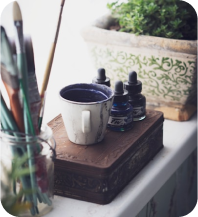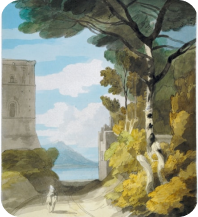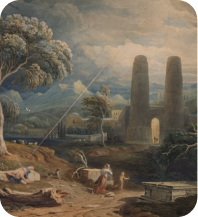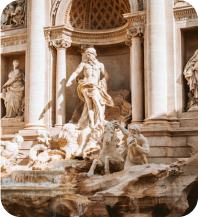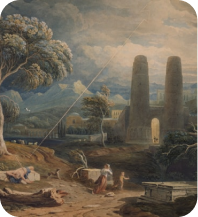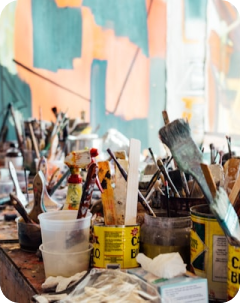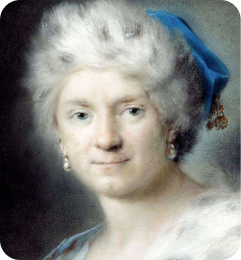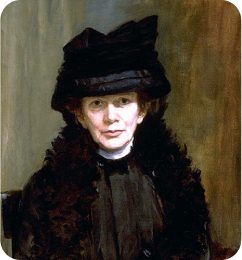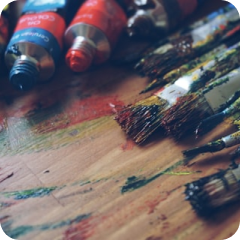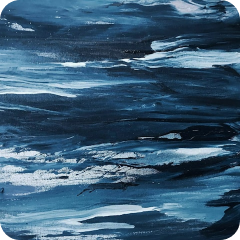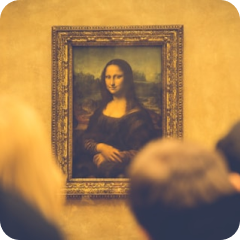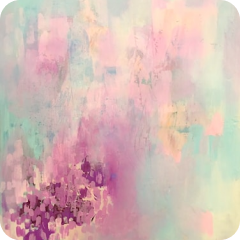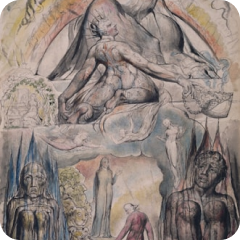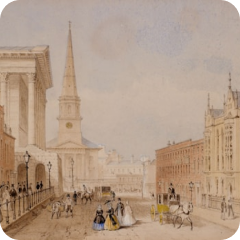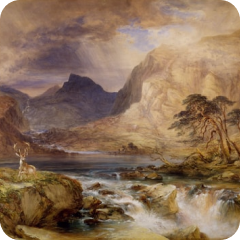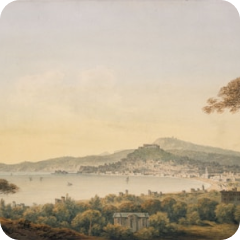Bring Your Walls to Life with Trumovo Canvas Prints
High-quality, customizable canvas art prints for any space

Create Your Custom Canvas in 4 Easy Steps

Step 1
Upload Your Image to the site

Step 2
Choose Size & Style

Step 3
Preview Your Design

Step 4
Place Your Order & Enjoy
;)
Top Categories
;)


Durable Prints
Long-lasting quality with vibrant colors.


Unique Designs
A variety of styles for every taste.


Personalized Art
Upload your image and create custom pieces.
On Sale Now
About Trumovo
Discover our exquisite collection of premium, tailor-made canvas art prints, designed to add a touch of elegance and personality to every room in your home. Whether you're looking to enhance your living room, bedroom, or office space, our art prints offer the perfect blend of style and sophistication, ensuring that each piece complements your unique taste and decor.
Hidden Gems
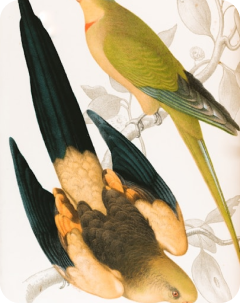
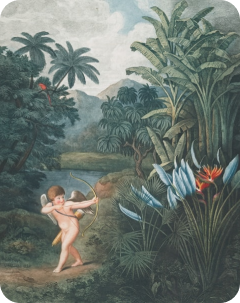


What Our Customers Say

“Lorem ipsum dolor sit amet consectetur. Nunc malesuada varius gravida lacus. Arcu fames vitae neque nulla hendrerit neque augue. Tortor ultricies lobortis consectetur commodo. Pretium eget lacus magna vel in eu amet sit.”

TechGuru88
Apex Solutions

“Lorem ipsum dolor sit amet consectetur. Nunc malesuada varius gravida lacus. Arcu fames vitae neque nulla hendrerit neque augue. Tortor ultricies lobortis consectetur commodo. Pretium eget lacus magna vel in eu amet sit.”

SunnyTraveler92
Luminous Innovations

“Lorem ipsum dolor sit amet consectetur. Nunc malesuada varius gravida lacus. Arcu fames vitae neque nulla hendrerit neque augue. Tortor ultricies lobortis consectetur commodo. Pretium eget lacus magna vel in eu amet sit.”

ArtisticSoul77
Nexus Dynamics

“Lorem ipsum dolor sit amet consectetur. Nunc malesuada varius gravida lacus. Arcu fames vitae neque nulla hendrerit neque augue. Tortor ultricies lobortis consectetur commodo. Pretium eget lacus magna vel in eu amet sit.”

SunnyTraveler92
Luminous Innovations
Complete Guide to Interior Wall Art Prints Transform Your Living Spaces
Transforming your dwelling into a sanctuary of aesthetic appeal begins with understanding the profound impact of carefully selected wall art prints. The journey of interior decoration through artistic expression offers countless possibilities to reflect personal taste while creating environments that inspire, comfort, and captivate visitors. This comprehensive exploration delves into the multifaceted world of decorative prints, examining how these visual elements can revolutionize any interior space.
Understanding the Fundamental Principles of Artistic Interior Design
The foundation of successful wall art curation lies in recognizing how visual elements interact with architectural features, lighting conditions, and existing furnishings. Each print serves as more than mere decoration; it becomes a conversation starter, a mood enhancer, and a reflection of the inhabitant's personality. The science behind visual perception plays a crucial role in how artwork affects our psychological state and overall well-being within living spaces.
Contemporary interior design emphasizes the importance of creating cohesive visual narratives throughout residential and commercial spaces. Wall art prints function as essential components in this storytelling process, bridging gaps between different design elements while establishing focal points that draw the eye and create visual interest. The strategic placement of artwork can alter perceived room dimensions, influence lighting conditions, and establish emotional atmospheres that enhance daily living experiences.
When considering the psychological impact of wall art, research demonstrates that visual stimuli significantly affect mood, productivity, and stress levels. Carefully chosen prints can promote relaxation in bedrooms, encourage creativity in workspaces, and foster social interaction in common areas. Understanding these connections empowers homeowners to make informed decisions about their artistic selections, creating environments that support their lifestyle goals and emotional needs.
The relationship between color theory and wall art selection cannot be overstated. Colors evoke specific emotional responses and can dramatically alter the perceived temperature, size, and energy of a room. Warm tones create cozy, intimate atmospheres, while cool colors promote tranquility and spaciousness. Neutral palettes offer versatility and timeless appeal, serving as sophisticated backdrops for furniture and decorative accessories.
Exploring Historical Artistic Movements and Their Contemporary Relevance
The evolution of artistic movements throughout history provides an extensive catalog of styles that continue to influence modern interior design. Each era brought distinct characteristics, philosophies, and aesthetic principles that remain relevant for contemporary wall art enthusiasts. Understanding these historical contexts enriches the selection process and helps create more meaningful decorative schemes.
Art Nouveau emerged during the late 19th century as a revolutionary movement that emphasized organic forms, flowing lines, and natural motifs. This style rejected the industrial age's mechanical aesthetic in favor of graceful curves inspired by botanical elements, feminine figures, and architectural details found in nature. The movement's emphasis on craftsmanship and decorative arts created a legacy of prints that continue to captivate modern audiences with their elegance and sophistication.
The Art Nouveau philosophy extended beyond visual aesthetics to encompass a comprehensive approach to design that integrated architecture, furniture, and decorative arts into unified compositions. This holistic perspective makes Art Nouveau prints particularly effective in contemporary interiors, where they can serve as unifying elements that connect various design components. The movement's characteristic color palettes, featuring muted earth tones, soft pastels, and metallic accents, complement both traditional and modern furnishing styles.
Artists like Alphonse Mucha, Gustav Klimt, and Charles Rennie Mackintosh created iconic works that continue to inspire contemporary print reproductions. Their innovative use of typography, decorative borders, and symbolic imagery established visual languages that remain influential in graphic design and interior decoration. These historical connections add depth and cultural significance to modern spaces, creating environments that celebrate artistic heritage while maintaining contemporary relevance.
The Art Deco Revolution and Its Lasting Impact on Interior Design
The 1920s and 1930s witnessed the emergence of Art Deco, a movement that embraced modernity, luxury, and geometric precision. This style represented a dramatic departure from Art Nouveau's organic forms, instead celebrating the machine age through bold patterns, metallic finishes, and architectural elements inspired by skyscrapers and industrial design. Art Deco prints bring glamour and sophistication to contemporary interiors while maintaining historical authenticity.
Art Deco's emphasis on geometric patterns, stepped forms, and symmetrical compositions creates visual impact that works exceptionally well in modern living spaces. The movement's characteristic color schemes, featuring rich jewel tones, metallic accents, and dramatic contrasts, provide opportunities for creating bold focal points or subtle accent pieces depending on implementation strategies. This versatility makes Art Deco prints suitable for various interior design approaches, from minimalist modern to eclectic maximalist.
The cultural significance of Art Deco extends beyond visual aesthetics to encompass broader social and economic themes from the interwar period. These prints often reflect optimism about technological progress, changing social norms, and urban sophistication. Incorporating Art Deco artwork into contemporary spaces creates connections to this pivotal historical moment while celebrating the enduring appeal of well-executed design principles.
Modern reproductions of Art Deco prints maintain the movement's essential characteristics while utilizing contemporary printing methods to achieve superior color accuracy and longevity. High-quality reproductions capture the metallic sheens, gradient effects, and fine detail work that define authentic Art Deco aesthetics, making these historical styles accessible to contemporary collectors and decorators.
Botanical Prints and the Enduring Appeal of Natural Imagery
The tradition of botanical illustration spans centuries, evolving from scientific documentation to decorative art that celebrates nature's infinite variety and beauty. Botanical prints offer timeless appeal that transcends changing design trends while providing versatile options for enhancing various interior styles. These nature-inspired artworks create connections to the natural world within indoor environments, promoting well-being and visual interest.
Historical botanical prints originated from scientific expeditions and scholarly research, where artists meticulously documented plant specimens for educational and reference purposes. This scientific heritage imbues botanical prints with authenticity and educational value that modern reproductions preserve. Contemporary botanical prints continue this tradition while incorporating modern design sensibilities and printing methods to create artwork that satisfies both decorative and intellectual interests.
The therapeutic benefits of nature imagery in interior spaces have been extensively documented through environmental psychology research. Botanical prints can reduce stress, improve air quality perception, and create calming atmospheres that support mental health and productivity. These psychological benefits make botanical artwork particularly valuable in high-stress environments like offices, medical facilities, and urban residences where direct natural connections may be limited.
Color palettes in botanical prints range from monochromatic studies that emphasize form and detail to vibrant celebrations of natural coloration. This diversity provides options for various design schemes, from subtle accent pieces to bold statement walls. The organic forms found in botanical imagery complement both structured architectural elements and flowing decorative accessories, creating balanced compositions that feel both sophisticated and approachable.
Japanese Aesthetic Principles and Their Timeless Relevance
Japanese aesthetic principles have captivated the world for centuries, not only through traditional painting, calligraphy, and ceramics but also through their seamless integration into contemporary design and wall art. The Japanese way of seeing beauty is profoundly connected with nature, impermanence, and subtlety, qualities that have shaped cultural values, architecture, interior spaces, and modern prints. Unlike many Western traditions that emphasize grandeur, perfection, and permanence, Japanese aesthetics turn the gaze toward quiet simplicity, asymmetry, and the spiritual richness of emptiness. This philosophical foundation has become an enduring influence in modern wall art, offering inspiration for serene, meditative living environments that balance restraint with depth.
The Japanese aesthetic outlook does not merely concern visual appearance but extends to a holistic way of perceiving the world. Concepts such as wabi-sabi, ma, and seasonal awareness provide guiding frameworks that artists, designers, and collectors alike embrace when curating wall art or creating decorative compositions. They help establish interiors that breathe with tranquility, remind inhabitants of the passage of time, and allow space for contemplation rather than clutter. As global design shifts increasingly toward minimalist sensibilities, Japanese principles continue to resonate, offering profound lessons on how simplicity and authenticity create deeper meaning in visual expression.
Wabi-Sabi and the Beauty of Imperfection
The concept of wabi-sabi is perhaps the most recognizable Japanese aesthetic philosophy and has had the deepest influence on contemporary art and wall decoration. At its essence, wabi-sabi is about embracing the imperfect, the impermanent, and the incomplete. It represents a celebration of irregularities, subtle textures, and quiet authenticity. In the realm of modern wall art, wabi-sabi translates into works that highlight natural materials, muted hues, and painterly gestures that refuse rigid perfection.
Japanese prints influenced by wabi-sabi often showcase brushstrokes that vary in thickness and tone, surfaces that reveal the hand of the maker, and compositions that are slightly off-center. Instead of striving for exact symmetry, the art invites viewers to engage with the small details that reveal themselves gradually over time. A print that uses faded ink, weathered paper, or uneven coloration communicates a sense of life lived, rather than polished permanence. For interiors, such works encourage inhabitants to value natural wear, reminding them that aging and transformation are integral parts of beauty.
This philosophy also provides a counterbalance to Western tendencies that often pursue flawless finishes and industrial perfection. In wall art, wabi-sabi infuses character into spaces by allowing for the unexpected and by valuing the quiet dignity of the imperfect. A wall adorned with wabi-sabi inspired pieces becomes a meditation on transience, urging the viewer to appreciate subtle differences in tone, texture, and form. Rather than demanding immediate attention, these artworks reward patience and invite repeated contemplation, deepening their impact over years rather than moments.
The Role of Seasonal Awareness in Japanese Art
One of the defining features of Japanese aesthetics is the deep sensitivity to the cycles of nature and the changing seasons. Unlike static decorative traditions, Japanese prints often embody a temporal quality that ties them to specific moments of the year. Artists historically depicted cherry blossoms to signal spring’s brief flowering, maple leaves to capture autumn’s fiery decline, or plum blossoms to herald resilience in late winter. Seasonal awareness imbues wall art with symbolism that transcends mere decoration and anchors it to the rhythm of life.
In contemporary wall art, this seasonal sensitivity offers both symbolic richness and practical versatility. By rotating art according to the seasons, interiors remain fresh and responsive to time, echoing the natural changes outside. Spring wall art might highlight gentle pastel tones, blossoming trees, or birds in flight, while autumn pieces may feature earthy browns, ochres, and hints of red. Such rotation prevents visual stagnation, making interior environments dynamic rather than fixed.
This connection to nature also deepens the emotional engagement between viewer and artwork. The sight of falling leaves or drifting petals on a print may evoke not only beauty but also the poignant awareness of impermanence. Seasonal imagery provides layers of cultural symbolism, creating art that resonates across generations. In a modern living room or gallery wall, prints infused with seasonal references foster a dialogue between interior space and the natural world, allowing for a continuous reminder of time’s passing and renewal.
The Concept of Ma and the Power of Emptiness
Another vital Japanese aesthetic principle is ma, often translated as negative space, interval, or meaningful emptiness. Ma is not simply the absence of content but rather the active presence of emptiness that gives surrounding elements their significance. In traditional Japanese painting and calligraphy, large areas of untouched paper are just as important as the ink strokes, creating a balance where emptiness becomes expressive.
In modern wall art placement, ma becomes a guiding principle for how works are displayed. A single print on a large wall surrounded by empty space can have far greater impact than a cluttered arrangement. Strategic emptiness allows the eye to rest, giving breathing room and making the displayed piece resonate with clarity. This approach contrasts with the Western tendency toward filling walls with numerous items, often resulting in visual noise.
The idea of ma also informs gallery walls, where spacing between artworks becomes as important as the artworks themselves. Careful placement ensures that each piece has room to breathe, and the empty spaces become part of the composition. In this sense, the wall itself participates in the artwork, with emptiness functioning as an invisible frame that enhances presence. Ma teaches that emptiness is not void but possibility, and by embracing it, wall art installations achieve harmony, clarity, and refinement.
Balance, Asymmetry, and Natural Flow
Balance in Japanese aesthetics rarely means strict symmetry. Instead, it embodies a dynamic equilibrium achieved through asymmetry, irregularity, and natural flow. This principle is visible in traditional gardens, architecture, and paintings, where elements are arranged to create harmony without uniformity. In modern wall art, asymmetry allows compositions to feel organic and alive, avoiding the rigidity of mechanical balance.
An asymmetrical print may feature a single tree leaning toward one side, or a landscape where the main subject occupies only a small portion of the composition. Such works invite the viewer’s imagination to wander into the empty or unoccupied spaces, making the visual experience more participatory. When applied to interior design, asymmetrical arrangements of wall art can create dynamism while maintaining serenity. A larger piece may balance several smaller ones, or a vertical scroll may offset a horizontal painting, creating visual rhythm without symmetry.
This principle reflects the Japanese reverence for natural forms, where perfection is never geometrically exact but always alive with variation. In contemporary practice, balance through asymmetry provides freshness and fluidity, allowing wall art to adapt to diverse spatial contexts. Instead of rigidly aligning frames or prints, the placement may mimic the natural flow of a branch, a stream, or drifting clouds, producing an environment that feels harmonious without appearing forced.
Influence of Minimalism and Simplicity
Japanese aesthetic philosophy has deeply influenced global minimalism, particularly in wall art and interior spaces. Simplicity in Japanese tradition is not emptiness for its own sake but a deliberate reduction that reveals essence. The restraint in color palettes, the avoidance of excessive detail, and the prioritization of atmosphere over spectacle all contribute to an art form that whispers rather than shouts.
In modern wall art, this minimalism translates into prints that rely on limited colors, often monochromatic or softly muted, with delicate brushwork or understated textures. Such pieces bring calm into interiors, functioning almost like windows into quiet landscapes of the mind. Minimalist Japanese-inspired wall art avoids overwhelming the senses, instead cultivating focus and serenity.
This minimalist approach resonates strongly with contemporary living, where clutter and overstimulation are common challenges. By incorporating Japanese-inspired simplicity into wall art, interiors can transform into sanctuaries that encourage mindfulness and relaxation. A simple ink wash painting of bamboo, for instance, can evoke depth and tranquility without elaborate detail, reminding viewers of the quiet strength in restraint.
Contemporary Applications in Wall Art and Interior Spaces
The enduring relevance of Japanese aesthetics lies in their adaptability to modern contexts. Today, designers, collectors, and homeowners integrate Japanese-inspired wall art into spaces that may otherwise be dominated by contemporary architecture and global influences. By doing so, they introduce harmony, authenticity, and cultural depth.
Modern Japanese-inspired prints often fuse traditional principles with contemporary media, blending ink brush techniques with digital printing or combining handmade textures with modern framing. Artists worldwide borrow from Japanese concepts of wabi-sabi, ma, and seasonal awareness to create pieces that transcend cultural boundaries while honoring their origins.
In residential spaces, Japanese-inspired wall art functions as more than decoration. It serves as a meditative focal point, guiding the mood of the entire room. A large print with subtle textures may anchor a minimalist living room, while a seasonal scroll can refresh a dining area throughout the year. In galleries and public spaces, such art provides an antidote to visual clutter, offering visitors quiet contemplation in contrast to overstimulation.
Corporate interiors also benefit from Japanese aesthetic principles, using wall art to create atmospheres of balance, focus, and serenity. A well-placed piece that embraces emptiness and imperfection can transform a sterile office into a space that fosters creativity and mindfulness. The adaptability of these principles ensures that Japanese-inspired wall art remains both culturally authentic and globally relevant in modern design practices.
Vintage Poster Art and Its Influence on Modern Interiors
Vintage poster art occupies a fascinating position at the intersection of advertising, fine art, and cultural memory. Originally created to capture public attention on crowded city streets, these posters were not only marketing tools but also vibrant visual documents that reflect the aesthetics, values, and social dynamics of their time. From early lithographic travel posters to mid-century product advertisements, each design reveals much about the aspirations, technologies, and artistic currents of its era. Today, vintage poster art has transcended its commercial beginnings, emerging as a powerful component in contemporary interior design narratives.
Posters were once ephemeral, designed for temporary display before being replaced by the next campaign. Yet their artistic quality, bold typographic experiments, and iconic imagery have allowed them to endure, achieving the status of collectible artworks and decorative statements. In modern interiors, vintage poster art provides not only visual impact but also a sense of history, nostalgia, and storytelling. A carefully chosen poster can serve as both a design focal point and a cultural artifact, bringing layers of meaning into residential, commercial, and public spaces. As design enthusiasts and collectors increasingly seek authenticity and individuality, these works continue to inspire and enrich interior environments.
Historical Evolution and Cultural Legacy
The roots of poster art stretch back to the late nineteenth century, when advances in printing technology—particularly color lithography—enabled large-scale production of vibrant, eye-catching designs. Artists such as Jules Chéret, often called the father of the modern poster, pioneered the fusion of commercial and artistic elements, creating images that captured the dynamism of modern urban life. The poster became a democratic art form, visible to all on street corners, railway stations, and cafés.
Throughout the early twentieth century, poster art reflected the stylistic revolutions of the time, from Art Nouveau’s curvilinear elegance to the bold geometry of Art Deco and the experimental typography of modernist movements. Travel posters promoted exotic destinations with idealized landscapes and glamorous imagery, while product advertisements celebrated industrial progress, leisure culture, and consumer desires. Political posters also played significant roles, using striking graphics to rally support, critique authority, or broadcast ideology.
Each poster encapsulated more than just its immediate purpose; it preserved cultural aspirations, social anxieties, and artistic experiments. As such, vintage poster art functions as a visual archive of modern history, documenting the rise of consumer culture, the spread of tourism, and the shifting ideals of beauty, luxury, and progress. Today, their historical resonance adds depth to interiors, allowing contemporary spaces to connect with narratives from another time.
Design Principles and Lasting Visual Power
One of the defining features of vintage posters is their reliance on graphic clarity. Unlike fine art paintings meant for prolonged viewing, posters were designed for rapid communication—often glimpsed in passing. This urgency demanded clear composition, bold contrasts, and instantly legible typography. Designers mastered the art of visual economy, condensing messages into a few powerful symbols supported by carefully balanced color palettes.
The use of flat, vibrant colors, dynamic diagonals, and strong silhouettes allowed posters to capture attention from afar. Typography was treated as image, with letterforms integrated into the overall design rather than functioning as separate captions. This blending of word and image anticipated many principles of modern graphic design, influencing generations of visual communicators.
In contemporary interiors, these design qualities remain striking. A vintage poster hung on a wall retains its ability to command attention, whether through a travel image of sweeping alpine landscapes, a glamorous portrayal of jazz-age nightlife, or an industrial product advertisement emphasizing bold geometry. The very qualities that made posters effective in their original contexts—clarity, impact, and visual rhythm—ensure their continued relevance as decorative and artistic statements.
Storytelling and Cultural Resonance
Beyond their formal design, vintage posters resonate because they tell stories. Each piece embodies a specific cultural moment, serving as a snapshot of collective aspirations and values. A 1920s poster promoting ocean liners evokes not only maritime travel but also the spirit of adventure, luxury, and modern engineering marvels. A mid-century beverage advertisement recalls the optimism of postwar consumer culture and the emergence of global brands.
When integrated into modern interiors, these posters function as conversation catalysts. Guests encountering a striking vintage print often inquire about its origins, prompting discussions about art, history, and cultural shifts. Travel posters inspire wanderlust and curiosity about different geographies, while product advertisements reflect changing consumer habits and industrial innovations. Their narrative layers add depth to interior spaces, elevating decoration into storytelling.
For individuals curating their homes or workspaces, poster choices often reflect personal identity. A collector passionate about aviation may display mid-century airline posters, while another fascinated by performing arts may highlight theatrical advertisements. This curatorial aspect allows interiors to become autobiographical, each poster representing a piece of cultural memory aligned with the inhabitant’s interests.
Authentication, Reproduction, and Accessibility
As poster collecting has grown, questions of authenticity and reproduction have become increasingly significant. Original posters, especially those in excellent condition, are valuable collectibles. Their rarity stems from their original purpose as ephemeral materials, with few surviving intact. Authentic originals carry historical weight, bearing the patina of time and the tactile qualities of period printing processes.
However, accessibility is also crucial, as not every enthusiast can acquire rare originals. High-quality reproductions offer a practical solution, making iconic designs available to wider audiences while preserving the visual integrity of the original works. Advances in printing allow reproductions to capture the richness of color and clarity of detail, enabling individuals to enjoy historically significant designs without prohibitive cost.
Distinguishing between original prints, authorized reproductions, and contemporary reinterpretations is important for informed decision-making. Collectors seeking investment value prioritize provenance, while interior designers may prioritize visual impact and scale. Both approaches remain valid, as the ultimate goal is to integrate the aesthetic and cultural resonance of poster art into spaces where it continues to inspire.
Integration into Contemporary Interior Narratives
The appeal of vintage poster art lies not only in its historical charm but also in its versatility within modern design contexts. Posters can serve as bold focal points in minimalist interiors, where their strong graphics contrast against clean architectural lines. In eclectic spaces, they contribute to layered storytelling, blending seamlessly with furniture, textiles, and decorative objects from various eras.
In contemporary living rooms, a large vintage travel poster can anchor the seating area, infusing the space with color and movement. In dining areas, food and beverage posters create convivial atmospheres, while in workspaces, industrial or typographic designs evoke creativity and focus. Hospitality environments, such as hotels, cafés, and restaurants, often use vintage posters to establish distinctive ambiance, drawing upon themes of nostalgia, cosmopolitanism, or cultural heritage.
The adaptability of poster art extends across scales, from single oversized statements to curated gallery walls. Designers often juxtapose different posters to highlight stylistic diversity, creating visual dialogues that echo both past and present. The democratic origins of posters—once intended for mass audiences—make them particularly suitable for contemporary spaces that seek inclusivity and accessibility in their visual language.
Enduring Appeal and Contemporary Relevance
The continuing fascination with vintage poster art arises from its ability to bridge time, blending historical authenticity with modern relevance. Posters remind us of an era when visual communication was tactile, crafted, and immediate, yet their design principles remain as compelling today as when they first adorned city streets. Their enduring appeal stems from their dual nature: they are both artworks and cultural artifacts, both decorative statements and historical documents.
In contemporary interiors, posters function as aesthetic anchors, storytelling devices, and symbols of authenticity. They offer an antidote to mass-produced decoration by connecting spaces to specific histories and cultural lineages. Whether displayed as prized originals or carefully produced reproductions, they carry with them the spirit of the past while remaining vibrant participants in present-day design.
As interior narratives increasingly emphasize personalization and meaning, vintage poster art proves invaluable. It allows inhabitants to construct spaces that are visually striking, intellectually engaging, and emotionally resonant. The legacy of poster art continues not only in its preservation but in its active integration into modern life, reminding us that even commercial ephemera can evolve into timeless expressions of cultural beauty.
Cocktail Culture and Recreational Imagery in Modern Interiors
Cocktail culture has experienced a remarkable renaissance in recent decades, shaping not only how beverages are prepared and consumed but also how they are represented in design, art, and interior decoration. This revival extends beyond the liquid contents of a glass, embracing the artistry of presentation, the nostalgia of mid-century aesthetics, and the imaginative spirit of social leisure. As a result, cocktail-related imagery has become an increasingly popular choice for wall art and decor, lending modern spaces an atmosphere that is both convivial and refined.
Cocktail prints and recreational artwork offer a fascinating interplay between function and fantasy. While originally rooted in advertising, menu design, and promotional material, these images have transcended their commercial origins to become cultural icons. Their bold colors, humorous undertones, and sophisticated compositions reflect shifting attitudes toward leisure and celebration. By integrating cocktail art into modern interiors, designers and collectors create environments that celebrate social tradition while offering a playful counterbalance to more serious aesthetic schemes.
The renewed popularity of these themes is no accident. As society embraces craft cocktails, artisanal barware, and the ritual of mixing drinks as cultural performance, the visual language surrounding cocktails has gained fresh relevance. This language not only references history but also adapts to contemporary sensibilities, ensuring that cocktail-inspired decor remains engaging, dynamic, and timeless.
Historical Context of Cocktail Imagery
The visual culture of cocktails can be traced back to the golden age of printed advertisements and hospitality marketing. During the early and mid-20th century, posters, menus, and promotional prints portrayed cocktails as emblems of sophistication, glamour, and modern leisure. These works often employed bold typography, sleek geometric layouts, and playful illustrations that mirrored the optimism of their era.
The 1920s and 1930s saw cocktail imagery infused with Art Deco elegance, where streamlined shapes, metallic tones, and stylized glassware symbolized progress and cosmopolitan refinement. By contrast, mid-century designs leaned toward cheerful colors, approachable humor, and whimsical characters, reflecting the democratization of leisure culture after World War II.
Cocktail posters from these periods capture more than just recipes or products; they embody the cultural atmosphere of their times. They reveal changing gender roles, evolving ideas of hospitality, and shifting social rituals. For example, images of well-dressed couples enjoying martinis not only promoted drinks but also reinforced ideals of glamour, companionship, and modern sophistication. This historical layering makes cocktail imagery especially compelling in today’s interiors, as it brings echoes of past social customs into present-day living spaces.
Design Language and Visual Strength
The enduring appeal of cocktail imagery lies partly in its mastery of graphic design. Posters, menus, and advertising prints had to communicate quickly and effectively, often in bustling environments such as bars, restaurants, and theaters. This necessity fostered a design language built on clarity, vibrancy, and memorable motifs.
Color theory played an essential role, with artists using bold contrasts to make images stand out in dimly lit venues. Typography became an expressive tool, with playful scripts, block letters, and stylized lettering often integrated directly into the imagery. Illustrations combined elegance and humor, sometimes portraying anthropomorphic bottles or glasses, sometimes spotlighting sophisticated silhouettes of bar patrons.
These design strategies continue to resonate with modern audiences. A vintage cocktail print hanging in a home bar still exudes energy and visual power. Its bold graphics create instant impact, while its playful sophistication ensures that it complements rather than overwhelms a space. This balance between clarity and charm, forged in the world of commercial art, gives cocktail imagery enduring relevance in modern decor.
Humor, Whimsy, and Social Atmosphere
Cocktail culture has always thrived on a delicate mix of sophistication and playfulness. Unlike more austere artistic themes, cocktail imagery often embraces humor and whimsy, presenting cheerful caricatures, witty taglines, or lighthearted depictions of leisure. This humor not only entertains but also makes interiors more approachable and welcoming.
For instance, a print depicting a jovial bartender juggling shakers adds personality to a room, while a whimsical travel poster featuring tropical cocktails evokes a sense of escapism. Such artwork encourages relaxation and conversation, setting the tone for gatherings. The lightheartedness does not diminish the sophistication of the art; instead, it enriches it, offering viewers a multifaceted experience that combines elegance with amusement.
In modern interiors, this balance is crucial. While minimalism and serious art can create serene environments, spaces intended for hospitality benefit from a more playful aesthetic. Cocktail imagery infuses energy into lounges, kitchens, dining areas, or dedicated bar corners, fostering social interaction. By integrating humor and whimsy into design while maintaining aesthetic integrity, cocktail-themed decor ensures that interiors feel lively without descending into kitsch.
Contemporary Interpretations and Evolving Styles
As cocktail culture has been revived, artists and designers have found new ways to reinterpret its imagery. Contemporary prints often blend historical references with modern minimalism, digital illustration techniques, or abstract design sensibilities. These reinterpretations allow cocktail art to remain relevant while honoring its cultural heritage.
Some contemporary works highlight the craft cocktail movement, focusing on detailed depictions of glassware, garnishes, and bar tools with almost scientific precision. Others take inspiration from mid-century aesthetics, recreating retro visual languages with modern twists. Abstract compositions may represent cocktails through color fields or geometric patterns that capture the mood of a drink rather than its literal form.
This diversity of styles ensures that cocktail art can adapt to a wide range of interior narratives. In industrial lofts, minimalist cocktail illustrations provide sophistication without clutter. In eclectic homes, retro-inspired posters create warmth and nostalgia. In luxury hospitality spaces, sleek modern interpretations reinforce elegance while referencing cultural history. By bridging past and present, contemporary cocktail art ensures that the spirit of leisure continues to resonate across generations.
Integration into Modern Interior Design
The versatility of cocktail and recreational imagery makes it particularly effective in modern interior design. These artworks can serve as bold focal points, subtle accents, or thematic anchors depending on placement and scale. In a home bar, a large cocktail print instantly establishes atmosphere, transforming the space into a destination within the home. In living or dining rooms, smaller works arranged in gallery-style compositions add layers of character and visual rhythm.
Commercial spaces benefit equally from cocktail imagery. Restaurants, lounges, and hotels often employ such artwork to reinforce ambiance, signal hospitality, and encourage conviviality. A retro cocktail poster can transport patrons to another era, while contemporary designs may highlight the sophistication of a craft-focused establishment. In both cases, the imagery enhances social interaction and reinforces brand identity.
The key to successful integration lies in context. Supporting design elements such as lighting, furniture, and color palettes should harmonize with the artwork. A playful poster may pair well with vibrant upholstery and eclectic furniture, while a sleek modern illustration suits minimalist interiors. By considering placement and cohesion, designers can ensure that cocktail imagery elevates rather than overwhelms the environment.
Enduring Cultural Relevance and Decorative Potential
The enduring fascination with cocktail imagery stems from its ability to embody cultural rituals, social pleasures, and artistic creativity. These artworks are more than decorations; they are cultural signifiers that celebrate hospitality, community, and leisure. By blending humor with elegance, history with modernity, they remain uniquely adaptable to contemporary spaces.
In a time when interiors are expected to express personality and narrative, cocktail art offers rich possibilities. It connects viewers to glamorous historical eras, acknowledges evolving social customs, and provides playful charm. Whether chosen for nostalgic value, design strength, or symbolic resonance, cocktail-themed prints contribute depth and vibrancy to modern interiors.
Ultimately, cocktail imagery embodies the very spirit it depicts: convivial, imaginative, and endlessly adaptable. It reminds us that leisure is not merely an escape from daily life but a cultural practice worth celebrating. In contemporary decor, this imagery does more than adorn walls—it enlivens them, creating spaces that encourage both reflection and joyful interaction.
Spatial Considerations and Room-Specific Strategies in Wall Art Design
The placement of wall art within an interior is not a matter of decoration alone but a deliberate practice that considers the psychological, functional, and spatial dynamics of each room. Every environment, whether residential or commercial, has a specific purpose that shapes how artwork is best selected and positioned. Understanding these nuances ensures that wall art prints contribute meaningfully to the atmosphere of a space rather than serving as superficial embellishment.
Wall art operates on multiple levels—it enriches aesthetic character, communicates cultural identity, and influences emotional well-being. The challenge lies in harmonizing artwork with the intended activity of each space. The living room, for instance, thrives on pieces that foster conversation, while bedrooms require soothing imagery to encourage rest. Kitchens, dining areas, offices, and transitional spaces each demand tailored approaches that reflect their unique functions. By analyzing spatial context and applying thoughtful strategies, wall art transforms interiors into cohesive environments where design and psychology work hand in hand.
Living Room Environments and Social Atmospheres
The living room often represents the heart of a home, where social interactions, relaxation, and entertainment converge. Because this space serves as both a communal hub and a reflection of personal taste, wall art here must balance visual impact with versatility. Large-scale prints or statement pieces can anchor the room, setting the tone for gatherings and reflecting cultural or artistic preferences.
Scale is particularly crucial in living rooms, as artwork must interact harmoniously with furniture arrangements. A piece hung above a sofa should span at least two-thirds of its length, ensuring proportional balance. Similarly, artwork above a fireplace should align with the mantel’s dimensions to avoid awkward gaps. When multiple prints are used, gallery-style arrangements can create rhythm and visual narrative, encouraging guests to engage with the display.
Thematic choices in living room wall art vary widely, from abstract compositions that spark conversation to representational works that reflect travel, heritage, or hobbies. Bold colors may energize the space, while muted tones foster calm. The versatility of this environment allows for experimentation, but successful living room art always enhances social warmth, offering visual focal points that inspire dialogue and create a sense of belonging.
Bedroom Artwork and Psychological Harmony
Bedrooms serve a fundamentally different purpose than living rooms, demanding strategies that prioritize intimacy, serenity, and personal reflection. Artwork in this environment should encourage rest while adding subtle layers of character. The psychological impact of bedroom imagery is profound, influencing emotional states, sleep quality, and overall well-being.
Soft color palettes—blues, greens, and gentle neutrals—are particularly effective in bedrooms, as they evoke calm and reduce cognitive overstimulation. Subject matter often leans toward nature-inspired imagery, abstract minimalism, or personal photography that carries emotional resonance. Instead of demanding immediate attention, bedroom wall art should invite quiet contemplation, enhancing relaxation without dominating the space.
Placement also requires careful thought. Artwork above the headboard provides a natural focal point, yet it must remain balanced and proportionate to the bed. Smaller, paired prints can frame the bed subtly, creating symmetry without visual clutter. In other areas of the bedroom, artwork may be placed at eye level from a reclining position, ensuring that it contributes to the room’s restorative purpose. By aligning visual language with the psychology of rest, bedroom wall art becomes a tool for nurturing comfort and intimacy.
Kitchens and Dining Spaces as Celebrations of Gathering
Kitchens and dining areas are unique spaces where functionality intersects with hospitality. Artwork in these environments should enhance conviviality while respecting practical considerations such as humidity, temperature, and frequent cleaning. Culinary imagery, vintage food posters, or botanical illustrations often resonate in these settings, reflecting themes of nourishment, abundance, and shared experience.
In kitchens, smaller prints or durable framed artwork work well, as surfaces may be exposed to splashes or steam. Cheerful compositions can enliven breakfast nooks or coffee corners, transforming utilitarian spaces into vibrant zones of daily enjoyment. In dining rooms, larger prints or curated series can establish atmosphere, making meals feel more intentional and memorable.
The psychological dimension of dining artwork lies in its ability to encourage conversation and enrich sensory experience. A colorful wine poster, for example, not only decorates but also stimulates discussions about taste and tradition. Botanical or landscape imagery can extend the dining experience beyond the table, suggesting connections to nature and agriculture. By blending thematic relevance with careful placement, wall art in kitchens and dining spaces reinforces the social and celebratory nature of meals.
Home Office Artwork and Productivity Balance
The home office has become increasingly significant in contemporary life, requiring art that balances stimulation with focus. Unlike living rooms or bedrooms, this environment must accommodate concentration and professional activity, yet it also benefits from visual relief that mitigates stress. Wall art in offices should energize the mind without creating distraction.
Abstract prints with geometric clarity, motivational typographic art, or nature scenes that suggest openness can all serve as effective office imagery. The choice depends largely on the occupant’s work style—those requiring creativity may thrive with vibrant, dynamic artwork, while analytical tasks may benefit from calm, ordered visuals. Professional considerations also play a role, particularly in spaces visible during virtual meetings. Artwork that projects sophistication or cultural awareness enhances credibility in professional contexts.
Placement strategies ensure that office artwork supports productivity. Pieces positioned opposite the desk provide mental breaks during moments of reflection, while those behind the desk can establish an authoritative backdrop. The goal is to create an environment where art complements workflow, preventing monotony while reinforcing focus. By blending aesthetic pleasure with professional purpose, home office artwork transforms workspaces into motivating and restorative environments.
Transitional Spaces and Flow Between Rooms
Hallways, entryways, and transitional zones often receive less attention than primary rooms, yet they play vital roles in establishing visual continuity throughout interiors. Artwork in these spaces guides movement, introduces themes, and bridges different atmospheres between rooms.
In entryways, wall art sets the tone for the entire home, offering immediate impressions of personality and style. Bold statements or symbolic imagery can create welcoming atmospheres that invite curiosity. Hallways benefit from series or linear arrangements that guide the eye, turning otherwise neglected spaces into mini-galleries. Stairwells, with their vertical expanses, provide unique opportunities for tall prints or ascending sequences that emphasize movement.
The psychological function of transitional artwork lies in its ability to create cohesion. By echoing themes or colors from adjacent rooms, these pieces ensure that spaces feel connected rather than fragmented. Transitional areas may not host prolonged activities, but their role in shaping perception and flow makes them essential components of room-specific wall art strategy.
Commercial Environments and Hospitality Design
Beyond residential spaces, commercial interiors also rely heavily on room-specific art strategies. Restaurants, hotels, and lounges require artwork that reinforces brand identity while enhancing guest experience. Just as living rooms prioritize sociability and bedrooms prioritize rest, hospitality environments use art to communicate themes of luxury, adventure, or cultural authenticity.
In restaurants, culinary prints or abstract works inspired by flavor and texture can enrich dining experiences, while hotel lobbies often employ large-scale statement pieces that create immediate impressions of grandeur. Lounges and bars frequently integrate playful or sophisticated cocktail imagery, blending history with contemporary leisure culture. Offices, conference rooms, and reception areas require professional but approachable art that projects credibility without alienation.
The adaptability of wall art to commercial contexts demonstrates its broader role in shaping atmosphere, customer perception, and brand storytelling. By applying spatial considerations similar to residential strategies but tailored to business goals, designers ensure that commercial environments remain both functional and memorable.
Lighting Strategies for Optimal Artwork Presentation
The relationship between lighting and artwork presentation is a crucial aspect of interior design that determines not only how art is perceived but also how well it is preserved over time. Light can elevate a print to its fullest expression, revealing subtle textures, intricate details, and nuanced colors that may otherwise remain unnoticed. Conversely, poorly chosen lighting can distort color accuracy, flatten depth, or cause irreversible damage through fading and heat exposure. The art of lighting requires a balance of technical knowledge and aesthetic sensitivity, ensuring that wall art is displayed in a way that maximizes its beauty while protecting it for years to come.
Understanding how lighting interacts with different mediums, surfaces, and pigments allows collectors, designers, and curators to make informed decisions about placement and presentation. Factors such as natural daylight, artificial illumination, fixture selection, and color temperature each influence how art is experienced. Strategic lighting design considers not only the artwork itself but also the spatial environment, architectural features, and the intended atmosphere of the room. By mastering lighting strategies, one transforms wall art from mere decoration into a focal point that defines the mood, character, and narrative of an interior.
Natural Light and Its Challenges
Natural light is often regarded as the most authentic way to view art, as it reveals true color values and creates dynamic variations throughout the day. Morning light may cast a cool clarity, while afternoon sunlight adds warmth and richness, offering ever-changing perspectives on a single artwork. However, natural light also presents significant challenges that require careful management.
Sunlight contains ultraviolet rays that are particularly damaging to pigments and paper. Over time, unprotected exposure can cause fading, discoloration, and brittleness, diminishing both the aesthetic and monetary value of prints. The intensity of sunlight fluctuates seasonally and daily, producing inconsistent illumination that may highlight certain areas while casting others into shadow. These variations can undermine the intended balance of an artwork, distracting the viewer’s eye from its full composition.
Strategies to mitigate these challenges include thoughtful placement that avoids direct exposure to windows, the use of UV-filtering glazing on frames, and incorporation of window treatments such as sheer curtains or blinds. Architectural solutions, including overhangs or recessed niches, can further protect art from harmful rays while still allowing rooms to benefit from the vitality of natural light. By combining these measures, one can retain the visual authenticity of daylight without compromising the longevity of valuable prints.
Artificial Illumination and Control
Artificial lighting provides unmatched control over intensity, direction, and duration, making it an essential tool for professional-quality artwork presentation. Unlike natural light, artificial systems allow for consistent illumination regardless of time of day or weather conditions, ensuring that artwork can be appreciated at its best in any environment.
LED lighting has become the preferred choice for modern art presentation due to its energy efficiency, low heat emission, and customizable options. Unlike halogen or incandescent bulbs, LEDs produce minimal ultraviolet radiation, significantly reducing the risk of damage to sensitive pigments. Furthermore, their long lifespan makes them sustainable investments for both residential and commercial display environments.
A critical factor in artificial lighting is color temperature, measured in Kelvin. Warm lighting (2700–3000K) can enrich earth tones and create intimate atmospheres, while cooler temperatures (4000–5000K) accentuate crisp detail and flatter modern, high-contrast prints. Selecting the appropriate temperature requires careful evaluation of the artwork’s color palette, medium, and thematic qualities. A pastel-toned botanical print may thrive under warmer light, while a bold abstract piece with sharp contrasts may demand cooler illumination to maintain clarity.
By tailoring artificial light systems to the specific needs of the art, one can achieve consistency, vibrancy, and protection that natural lighting alone cannot provide.
Directional Lighting and Adjustable Fixtures
The direction from which light strikes an artwork greatly influences how it is perceived. Front lighting, when evenly distributed, reveals color fidelity and detail but can risk flattening texture. Side lighting emphasizes surface relief, highlighting brushstrokes, fabric grain, or paper texture, yet it may create uneven contrasts if too pronounced. Angled lighting, typically set at 30 degrees, strikes a balance by reducing glare while accentuating depth.
Adjustable track lighting has become a favored solution for art display due to its flexibility. Tracks allow fixtures to be repositioned, tilted, or rotated according to changing needs. This adaptability supports seasonal adjustments, art rotations, or reconfigurations of gallery walls without requiring new installations. Dimmer controls enhance this flexibility by allowing light intensity to shift for different occasions, from subdued evening gatherings to vibrant daytime exhibitions.
Such systems are particularly valuable in multipurpose spaces where art must remain dynamic. A living room may require warm, intimate lighting for social settings but brighter, cooler illumination when functioning as a workspace. Adjustable fixtures make these transitions seamless, ensuring that artwork continues to harmonize with shifting contexts.
Picture Lights and Specialized Systems
Dedicated artwork lighting, such as picture lights, provides museum-quality presentation in residential and commercial interiors. Mounted directly above or beside frames, picture lights bathe prints in focused illumination that enhances their presence without overwhelming surrounding spaces. By distributing light evenly across the surface, these fixtures minimize distracting shadows and reflections that can obscure detail.
Advances in technology have refined picture lights to include adjustable arms, LED integration, and dimmable functions, allowing precise customization for each piece. Wireless options also exist, eliminating the need for intrusive wiring while maintaining professional results. For particularly valuable collections, fiber optic systems offer superior preservation by transmitting light without heat or UV rays, though these systems require more significant investment.
The choice of specialized lighting communicates commitment to artistic presentation. Just as quality framing protects and dignifies an artwork, dedicated lighting elevates its perceived value, transforming prints into focal points that command respect and admiration.
Balancing Atmosphere and Function
Effective artwork lighting extends beyond technical precision; it also shapes the overall atmosphere of a room. Light can dramatize, soften, highlight, or recede, depending on the desired emotional tone. A softly illuminated landscape print may evoke tranquility in a bedroom, while a brightly spotlighted abstract piece may energize a living room or office.
The challenge lies in balancing the artwork’s needs with the room’s broader function. Dining rooms benefit from warm, flattering light that enhances both art and culinary presentation, whereas offices require crisp, neutral illumination that maintains focus without distraction. Transitional spaces such as hallways may employ directional lighting to create visual continuity and guide movement, turning ordinary passageways into curated galleries.
By aligning lighting strategies with both artwork and environment, designers ensure cohesion. Each adjustment becomes an intentional act of storytelling, with light acting as both functional necessity and aesthetic medium.
Preservation and Long-Term Protection
While lighting serves the immediate purpose of enhancing presentation, it also plays a vital role in preservation. Light-induced deterioration remains one of the most significant threats to printed artworks, especially those produced on delicate paper or with sensitive pigments. Long-term exposure to UV rays or excessive brightness leads to fading, yellowing, and irreversible structural damage.
Preventive measures include limiting exposure duration through automated lighting controls or occupancy sensors that activate only when rooms are in use. Employing UV-filtering glass or acrylic on frames adds another layer of protection, as does selecting LED or fiber optic systems specifically designed to reduce harmful emissions. Monitoring light levels with lux meters ensures that intensity remains within safe thresholds recommended for art conservation.
By adopting these protective strategies, collectors and designers safeguard not only the visual impact of artwork but also its cultural and financial value. Lighting, therefore, becomes not merely an enhancement tool but a crucial factor in the stewardship of artistic heritage.
Framing Philosophies and Presentation Strategies
The selection and implementation of framing systems profoundly influences how artwork integrates with interior environments while providing protection and structural support for prints. Understanding various framing approaches enables informed decisions that enhance artistic impact while maintaining long-term preservation of valuable pieces.
Traditional framing approaches emphasize craftsmanship, material quality, and historical precedent in creating presentation systems that complement rather than compete with artwork. Classic frame profiles, quality matting materials, and conservation-grade glazing protect prints while maintaining timeless aesthetic appeal that transcends changing decorative trends. These approaches often prove most cost-effective over time through durability and versatility.
Contemporary framing systems embrace minimalism, innovative materials, and streamlined profiles that allow artwork to dominate visual attention while providing necessary protection and support. Modern approaches often incorporate floating presentations, edge-to-edge glazing, and integrated hanging systems that create clean, uncluttered appearances suitable for contemporary interior styles.
Gallery-style presentation eliminates traditional framing elements in favor of direct mounting systems that emphasize artwork scale and impact while reducing visual boundaries between prints and wall surfaces. These approaches work particularly effectively with contemporary prints and modern interior styles but require careful consideration of print quality, mounting substrates, and environmental protection.
Conservation framing incorporates archival materials and preservation strategies that protect valuable prints from environmental damage while maintaining visual accessibility. These approaches become particularly important for original prints, limited editions, or pieces with significant monetary or sentimental value. Understanding conservation principles helps make informed decisions about protection levels appropriate for specific pieces and environments.
Gallery Wall Composition and Multi-Piece Arrangements
Creating effective gallery walls requires understanding compositional principles that govern visual balance, rhythm, and hierarchy within multi-piece arrangements. These installations can transform blank wall surfaces into dynamic focal points while displaying multiple artworks in cohesive, visually compelling arrangements that enhance rather than overwhelm interior spaces.
Scale relationships between individual pieces within gallery arrangements determine visual balance and prevent any single piece from dominating or disappearing within the composition. Mixing different print sizes creates dynamic visual rhythms while requiring careful attention to spacing, alignment, and overall proportional relationships. Understanding how the human eye processes multiple visual elements helps create arrangements that feel intentional rather than chaotic.
Color coordination within gallery walls can follow various strategies ranging from monochromatic harmony to bold contrasting schemes that create visual excitement and movement. Understanding color theory principles helps create cohesive arrangements that support overall interior color schemes while allowing individual pieces to maintain their distinct visual identities. The interaction between different color palettes within single arrangements can create sophisticated visual effects that enhance perceived complexity and interest.
Thematic connections between pieces can create intellectual and visual coherence that enhances the impact of individual artworks while telling broader stories about personal interests, cultural connections, or aesthetic preferences. These connections might include historical periods, artistic movements, subject matter, or geographical origins that create meaningful relationships between displayed pieces.
Spacing and alignment considerations require careful measurement and planning to achieve professional-quality results that feel intentional rather than accidental. Various alignment strategies, including center-line arrangements, edge alignments, and geometric patterns, offer different visual effects and organizational principles that can accommodate different wall dimensions and architectural features.
Preservation Strategies and Long-Term Care
Protecting wall art prints from environmental damage while maintaining visual accessibility requires understanding various threats to print longevity and implementing appropriate preventive measures. Proper care extends the life of artistic investments while preserving their visual impact and potential value appreciation over time.
Environmental factors including humidity, temperature fluctuations, air pollution, and light exposure can gradually degrade print materials and alter colors in ways that may not be immediately apparent but become significant over extended periods. Understanding these threats enables proactive protection strategies that preserve print quality while maintaining display flexibility.
Ultraviolet radiation from both natural and artificial light sources poses the most significant threat to print longevity, causing fading and color shifts that cannot be reversed. UV-filtering glazing, window treatments, and appropriate artificial lighting selection provide protection while maintaining visual access to artwork. The investment in UV protection typically pays dividends through extended print life and maintained color accuracy.
Humidity control becomes particularly important in climates with significant seasonal variations or in rooms with moisture sources like kitchens and bathrooms. Excessive humidity can promote mold growth, paper deterioration, and adhesive failure in mounted prints. Conversely, extremely dry conditions can cause paper shrinkage and cracking that may damage print integrity.
Regular inspection and maintenance routines help identify potential problems before they become serious threats to print condition. Understanding what to look for and when to seek professional conservation services protects artistic investments while maintaining display quality. Documentation of condition changes over time provides valuable information for insurance and conservation decisions.
Color Theory Applications in Print Selection
Understanding how colors interact within interior environments enables more sophisticated artwork selection that enhances overall design schemes while achieving intended psychological and aesthetic effects. Color theory provides scientific foundations for making artistic choices that support functional and emotional goals within living spaces.
Warm color palettes featuring reds, oranges, and yellows create energetic, intimate atmospheres that encourage social interaction and activity. These colors work particularly effectively in common areas where energy and warmth enhance social functions. Understanding how warm colors affect perceived room temperature and spatial dimensions helps make appropriate selections for different architectural contexts.
Cool color schemes incorporating blues, greens, and violets promote tranquility, focus, and relaxation while creating impressions of increased space and airiness. These palettes work effectively in bedrooms, offices, and other areas where calm concentration or rest are priorities. The psychological effects of cool colors can be leveraged to create restorative environments that balance the stress of modern living.
Neutral color palettes provide versatile foundations that accommodate changing decorative schemes while maintaining sophisticated, timeless appeal. Understanding the subtle variations within neutral ranges and how they interact with different lighting conditions enables creation of complex, layered color schemes that avoid monotony while maintaining coherence.
Accent color strategies use small amounts of bold or contrasting colors to create visual interest and focal points within otherwise subdued color schemes. Wall art prints provide excellent vehicles for introducing accent colors while maintaining flexibility for future decorative changes. Understanding proportion and placement principles helps achieve balanced accent implementations.
Cultural Sensitivity and Global Artistic Traditions
Incorporating artwork from various cultural traditions requires understanding historical contexts, symbolic meanings, and appropriate presentation strategies that demonstrate respect while celebrating global artistic heritage. Cultural sensitivity in art selection creates opportunities for learning and appreciation while avoiding appropriation or misrepresentation.
Understanding the historical and religious contexts of traditional artistic imagery helps make informed decisions about appropriate use and presentation in contemporary secular environments. Many artistic traditions carry spiritual or cultural significance that should be acknowledged and respected through thoughtful selection and presentation approaches.
Supporting authentic artistic traditions through legitimate sources helps preserve cultural heritage while ensuring that artists and communities benefit from commercial use of traditional designs. Understanding the difference between authentic cultural artwork and commercial interpretations helps make ethical purchasing decisions that support rather than exploit cultural traditions.
Contemporary interpretations of traditional artistic themes can provide accessible entry points for appreciating global artistic heritage while maintaining relevance in modern contexts. These adaptations often combine traditional motifs with contemporary design sensibilities in ways that honor historical precedents while serving current decorative needs.
Educational opportunities embedded in culturally diverse artwork collections can enhance understanding and appreciation of global artistic traditions while creating meaningful conversations about cultural exchange and artistic evolution. These intellectual dimensions add depth to decorative schemes while supporting broader educational and cultural goals.
Seasonal Rotation and Display Flexibility
Creating systems that allow for seasonal artwork rotation maintains visual freshness while maximizing the impact of artistic collections through strategic display timing. Seasonal approaches prevent visual stagnation while providing opportunities to highlight different pieces and themes throughout the year.
Storage solutions for artwork not currently displayed require consideration of protection requirements, accessibility needs, and space constraints while maintaining easy rotation capabilities. Proper storage preserves print condition while enabling quick display changes that keep interior environments dynamic and engaging.
Modular display systems provide flexibility for changing arrangements without permanent wall modifications while maintaining professional presentation quality. These systems can accommodate various print sizes and framing styles while enabling easy reconfiguration for different occasions or preferences.
Seasonal color and theme coordination can enhance holiday celebrations and seasonal transitions while maintaining overall design coherence. Understanding how to integrate temporary seasonal elements with permanent decorative schemes creates dynamic environments that celebrate changing seasons without compromising established aesthetic foundations.
Planning rotation schedules helps ensure that all pieces in collections receive appropriate display time while preventing any single arrangement from becoming stale or overlooked. These schedules can coordinate with seasonal changes, personal milestones, or simply provide variety that maintains engagement with artistic collections.
Conclusion
The transformative power of wall art prints in interior design extends far beyond simple decoration to encompass psychological well-being, cultural expression, and personal fulfillment. Through careful consideration of artistic styles, historical contexts, and practical implementation strategies, homeowners can create environments that reflect their values while supporting their daily activities and long-term goals.
The journey of selecting and displaying wall art prints offers ongoing opportunities for learning, growth, and aesthetic development that evolve with changing life circumstances and developing tastes. This dynamic relationship between inhabitants and their artistic environments creates living spaces that remain engaging and meaningful over extended periods.
Success in wall art curation comes from balancing personal preferences with design principles while remaining open to new discoveries and evolving aesthetic sensibilities. The investment in quality prints and thoughtful presentation strategies pays dividends through enhanced daily living experiences and the creation of environments that support both solitude and social interaction.
The historical and cultural dimensions of wall art prints provide connections to broader human experiences while celebrating the diversity of artistic expression across time and geography. These connections enrich daily life while providing opportunities for continued learning and appreciation of global artistic heritage.
The practical aspects of print selection, framing, lighting, and preservation ensure that artistic investments maintain their impact and value over time while providing flexibility for changing needs and preferences. Understanding these practical considerations enables confident decision-making that balances aesthetic goals with functional requirements.
The economic considerations surrounding wall art collection demonstrate that meaningful artistic environments can be created across various budget levels through strategic purchasing and creative presentation approaches. The key lies in prioritizing quality over quantity while building collections gradually through informed, intentional choices.
The social and psychological benefits of well-curated wall art extend to all inhabitants and visitors, creating environments that promote well-being while facilitating meaningful connections between people and their living spaces. These benefits justify the time and resources invested in thoughtful artistic curation while providing lasting satisfaction that transcends changing decorative trends.
The future of wall art in interior design continues to evolve with changing lifestyles, preferences, and available options while maintaining fundamental principles of beauty, meaning, and personal expression that have guided human artistic appreciation throughout history.





